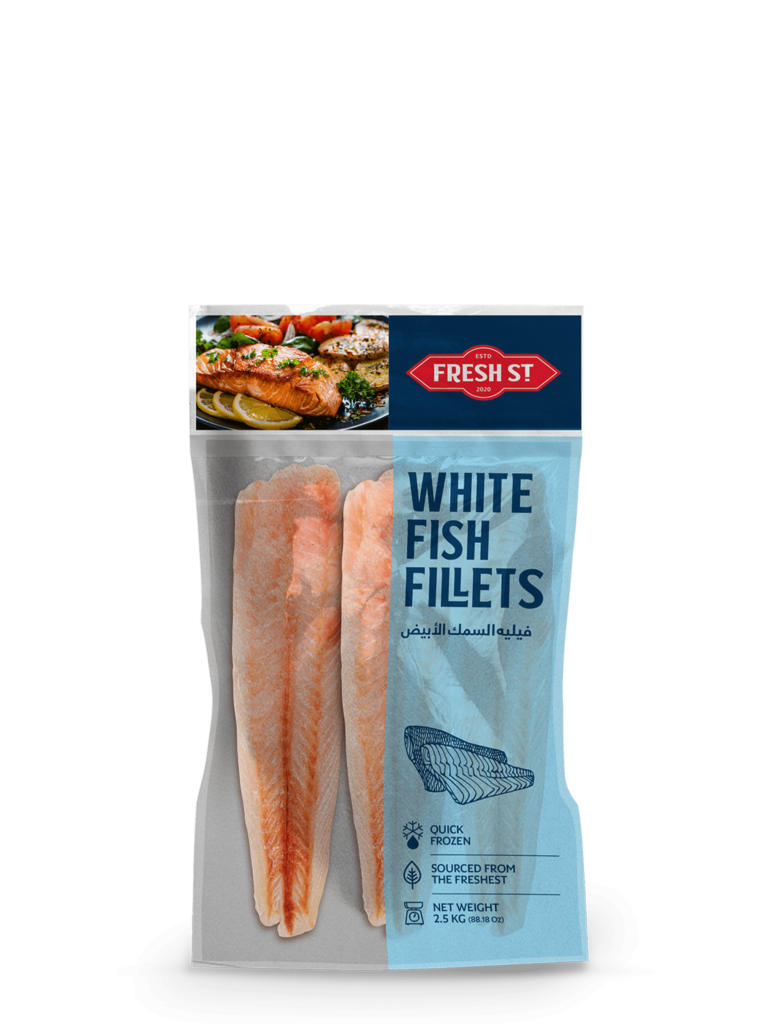Introduction
Frozen fish fillets have become a staple in many households, offering a convenient and versatile option for home cooks. They provide a quick solution for healthy meals and are available year-round, regardless of the season. Understanding the benefits and uses of frozen fish fillets can help you make the most of this versatile ingredient.
Why Choose Frozen Fish Fillets?
Frozen fish fillets offer several advantages over their fresh counterparts. One of the primary benefits is convenience. Frozen fillets are ready to cook straight from the freezer, saving you time on meal preparation. This convenience is particularly valuable for busy individuals and families who need quick and easy meal options.
Additionally, frozen fish fillets often come at a more affordable price than fresh fish, especially when considering the cost of sourcing fresh fish daily. This makes frozen options a cost-effective choice without sacrificing quality. The freezing process also helps preserve the fish’s nutritional value, ensuring you get the benefits of omega-3 fatty acids and other essential nutrients.
How Are Frozen Fish Fillets Processed?
The process of freezing fish fillets begins shortly after the catch. The fish are quickly cleaned, filleted, and frozen to preserve their freshness. This rapid freezing process locks in the flavors and nutrients, ensuring that the fillets retain their quality when thawed. Some fillets are flash-frozen, which involves freezing them at extremely low temperatures to maintain their texture and taste.
Many frozen fish fillets are packaged in vacuum-sealed bags, which further helps in preserving their freshness. This packaging method prevents freezer burn and keeps the fillets free from contaminants. Whether you prefer cod, salmon, or tilapia, you’ll find a variety of frozen fish fillets to suit your taste and dietary preferences.
Cooking Frozen Fish Fillets: Tips and Techniques
Cooking frozen fish fillets is straightforward, and there are several methods to choose from. One popular method is baking. To bake frozen fish fillets, preheat your oven to the recommended temperature, place the fillets on a baking sheet, and season them to your liking. Bake until the fish is cooked through and flakes easily with a fork.
Another easy method is pan-searing. Heat a skillet over medium-high heat, add a small amount of oil, and place the frozen fillets in the pan. Cook the fillets for a few minutes on each side until they reach the desired level of doneness. Pan-searing can give your fish a crispy exterior while keeping the inside moist and tender.
For a quicker option, you can also cook frozen fish fillets in the microwave. Place the fillets on a microwave-safe plate, cover them with a microwave-safe lid or plastic wrap, and cook on high for a few minutes. Be sure to check the fillets frequently to avoid overcooking.
Delicious Recipes Featuring Frozen Fish Fillets
Frozen fish fillets can be used in a wide range of recipes, from simple weeknight dinners to more elaborate meals. Here are a few ideas to get you started:
1. Fish Tacos: Season your frozen fish fillets with a blend of spices and bake or fry them until crispy. Serve the fish in soft tortillas with fresh salsa, shredded cabbage, and a drizzle of lime crema for a delicious and satisfying meal.
2. Fish and Chips: Coat your frozen fish fillets in a light batter and fry until golden brown. Serve with crispy homemade fries and a side of tartar sauce for a classic comfort food dish.
3. Fish Curry: Prepare a flavorful curry sauce with coconut milk, tomatoes, and your favorite spices. Add the frozen fish fillets to the sauce and simmer until cooked through. Serve with rice or naan for a hearty and flavorful meal.
4. Fish Pie: Create a creamy fish pie by combining cooked frozen fish fillets with a mixture of peas, carrots, and a savory sauce. Top with mashed potatoes and bake until golden and bubbling for a comforting and delicious dish.
Health Benefits of Eating Frozen Fish Fillets
Incorporating frozen fish fillets into your diet can have numerous health benefits. Fish is a rich source of high-quality protein, which is essential for muscle repair and overall health. Additionally, fish provides important nutrients such as omega-3 fatty acids, which support heart health and brain function.
Frozen fish fillets are also low in fat and calories, making them a healthy choice for those looking to maintain or lose weight. They offer a nutritious alternative to more processed foods and can be included in a balanced diet.
Storing and Handling Frozen Fish Fillets
Proper storage and handling of frozen fish fillets are crucial to maintaining their quality. Store the fillets in the freezer at 0°F (-18°C) or lower. Make sure the packaging is intact and free from any damage to prevent freezer burn.
When you’re ready to use the fish, thaw it safely in the refrigerator or under cold running water. Avoid thawing fish at room temperature, as this can lead to bacterial growth and affect the quality of the fillets.
If you have leftover cooked fish, store it in an airtight container in the refrigerator for up to three days. Reheat the fish gently to avoid overcooking and maintain its texture and flavor.
Conclusion
Frozen fish fillets offer a convenient, affordable, and nutritious option for home cooks. With their ease of preparation and versatility, they can be incorporated into a variety of delicious recipes. Whether you’re baking, pan-searing, or microwaving, frozen fish fillets are a great way to enjoy the benefits of seafood without the hassle of daily shopping for fresh fish. By following proper storage and cooking techniques, you can make the most of this versatile ingredient and enjoy healthy, tasty meals anytime.
Looking for the best Replica Watches site 2024 in the world? Buy now High-Quality replica watches for the best price on best replica watches uk website.
We specialize in selling Top Swiss Cheap Breitling Replica Watches.
IWC replica show Swiss luxury replica iwc watch here best cheap price with AAA High quality fake watches.



